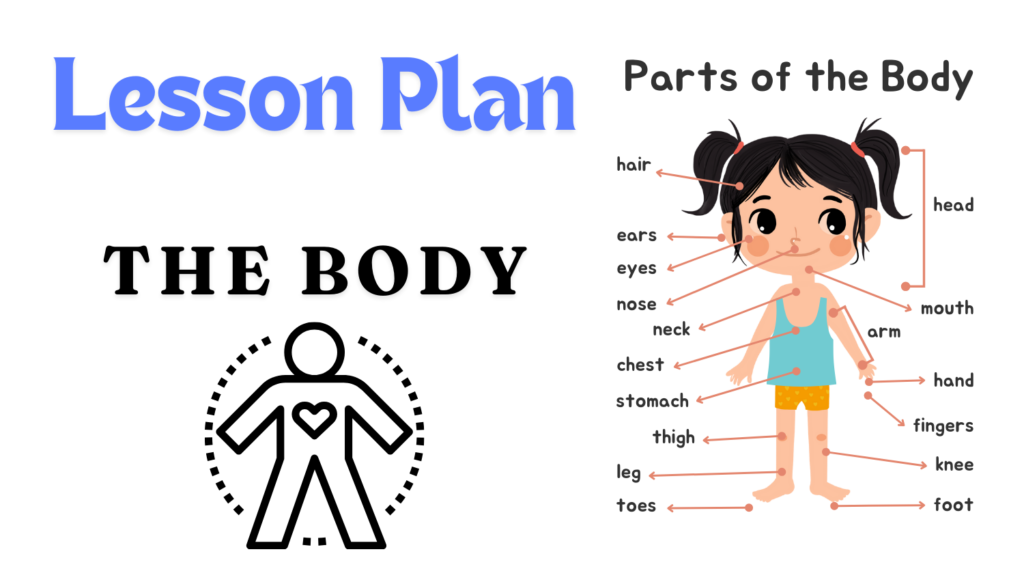Objective: #
By the end of the lesson, students should be able to identify and name basic body parts and express this knowledge through songs.
Materials Needed: #
Pictures or flashcards of different body parts. A large diagram of a human body. Music player or a musical instrument (like a guitar or keyboard). Handouts with song lyrics (optional). Introduction (5 minutes): Begin with a simple warm-up. Ask students to stand up and do a simple movement like touching their toes, shaking their hands, or nodding their heads. Ask students to identify the body part they just moved.

Introduction (10 minutes): #
Show students the large diagram of the human body. Point to each body part (head, shoulders, knees, toes, eyes, ears, mouth, nose, etc.) and say its name aloud. Encourage students to repeat after you. Using the flashcards, show pictures of individual body parts. Ask students to identify them. Give them praise for correct answers.
Singing Activity (10 minutes): Song 1: “Head, Shoulders, Knees, and Toes”
Lyrics: Head, shoulders, knees, and toes, knees and toes Head, shoulders, knees, and toes, knees and toes And eyes and ears and mouth and nose Head, shoulders, knees, and toes, knees and toes
Instructions: Sing the song while pointing to each body part as it’s sung. Speed up each time you repeat it to make it more fun and challenging.
Song 2: “If You’re Happy and You Know It” (You can modify the traditional lyrics to incorporate body parts.)
Lyrics: If you’re happy and you know it, touch your head (touch head) If you’re happy and you know it, touch your head (touch head) If you’re happy and you know it and you really want to show it If you’re happy and you know it, touch your head (touch head) Repeat with other body parts (touch your toes, rub your tummy, etc.)
Activity (3 minutes):
“Simon Says” Play a game of “Simon Says” using the body parts. This game not only tests their listening skills but also their knowledge of the body parts. For example: “Simon says touch your toes!” or “Simon says clap your hands!”
Conclusion (2 minutes):
Review the body parts covered in the lesson. Encourage students to sing the songs with their parents or guardians at home.
Tips: The lesson can be modified based on the students’ prior knowledge and language proficiency. Always keep it interactive and engaging. Use a lot of visuals and actions to cater to young learners’ needs. Praise and positive reinforcement can go a long way with this age group. Remember, with kindergarten students, the key is repetition and engagement. Keep the lesson lively, interactive, and fun!



